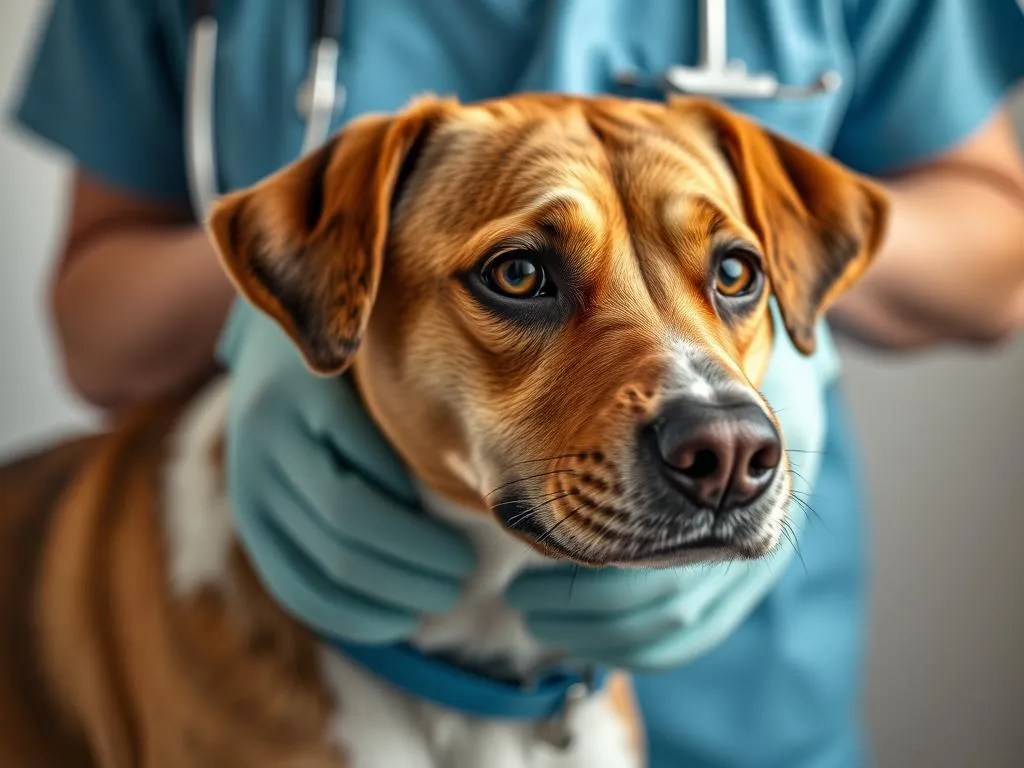
Taking your beloved canine companion to the vet can often feel like a daunting task. Many dog owners have experienced the struggle of getting their pets into the veterinary clinic, only to face a whirlwind of barking, whining, and even hiding. Understanding why dogs hate the vet is crucial for pet owners who want to ensure their furry friends have a positive experience during these visits.
In this article, we’ll delve into the psychology of dogs, the factors that contribute to their anxiety about vet visits, and strategies to ease their fears. By gaining insight into their behaviors and implementing some effective techniques, you can help make vet visits less stressful for your dog and yourself.
Understanding Dog Behavior
Canine Psychology
Dogs are inherently sensitive creatures that perceive their environment through a unique lens. They rely heavily on their acute senses of smell, sight, and hearing, which can significantly differ from human perception. For instance, dogs can detect scents at incredibly low concentrations, making them highly aware of the various smells present in a veterinary clinic. This heightened sensitivity can make an unfamiliar place overwhelming.
Moreover, dogs are instinctual animals, often driven by their basic needs for safety and comfort. They tend to avoid places that evoke fear or anxiety, which is why the vet can become a source of dread for many dogs.
Fear and Anxiety in Dogs
Fear and anxiety are common issues among dogs, especially when faced with unfamiliar environments. A visit to the vet can introduce a multitude of stressors, including new sights, strange smells, and loud noises from other animals.
Some common signs of anxiety in dogs include:
- Barking or whining
- Hiding or attempting to escape
- Panting or pacing
- Excessive drooling
Recognizing these signs is the first step in understanding why dogs hate the vet. By identifying their anxiety, you can take steps to mitigate their fears.
Factors Contributing to Vet Anxiety
Previous Negative Experiences
One of the most significant factors contributing to a dog’s dislike of the vet is a past traumatic experience. Just like humans, dogs can remember painful events, and if a visit to the vet resulted in discomfort—be it from vaccinations, examinations, or procedures—they may associate the clinic with pain. This learned behavior can create a lasting impact, leading to fear and avoidance.
For example, a dog that had a painful vaccination may remember that experience and react with anxiety the next time they are placed in a similar environment. Anecdotes from pet owners often reveal how their dogs became fearful after just one negative visit.
Sensory Overload at the Vet
Veterinary clinics are bustling environments filled with various sensory stimuli. The sounds of barking dogs, the beeping of machines, and the clattering of instruments can create an overwhelming atmosphere for a sensitive dog.
Additionally, the strong smells of disinfectants, other animals, and medical supplies can be unsettling. It’s not unusual for a dog to feel overwhelmed by the sheer volume of stimuli, leading to heightened anxiety. Understanding this sensory overload is essential in comprehending why dogs hate the vet.
Association with Pain or Discomfort
As previously mentioned, dogs often develop associations between the vet and painful experiences. This can create a cycle of fear; the dog becomes anxious about the visit, which can lead to more challenging behavior during the appointment, further reinforcing their negative associations.
For pet owners, recognizing this association is crucial. It requires a gentle approach to help dogs dissociate the vet from pain. Building a positive connection with the veterinary environment can help shift those negative associations.
The Role of the Veterinarian
Veterinary Approach to Animal Care
Veterinarians play a significant role in how dogs perceive their visits to the clinic. A veterinarian’s demeanor can greatly influence a dog’s comfort level. A gentle, calm approach can help ease a dog’s anxiety, whereas a rushed or aggressive interaction can exacerbate fear.
It’s essential for veterinarians to take their time, allowing dogs to acclimate to the environment before any examinations or procedures begin. This approach can foster a sense of security, making future visits less stressful.
The Importance of Communication
Clear communication between the veterinarian and the pet owner is vital for easing a dog’s anxiety. When a veterinarian explains the procedures and what the dog can expect during the visit, it helps the owner convey this information to their pet, providing reassurance.
Moreover, veterinarians should be proactive in creating a stress-free environment. This can include having a designated waiting area for anxious dogs, using calming music, or even reducing the number of other animals in the clinic at any given time.
Tips for Reducing Vet Anxiety
Preparing for the Vet Visit
Preparation can make a significant difference in how a dog experiences a vet visit. Familiarizing your dog with the clinic before the appointment can help reduce anxiety. Consider visiting the clinic for a quick, non-invasive visit where your dog can explore the space without the stress of an actual appointment.
Positive reinforcement is key during this preparation phase. Reward your dog with treats and praise for calm behavior, helping them form a positive association with the vet environment.
Choosing the Right Vet
Not all veterinarians have the same approach to animal care. It’s essential to find a veterinarian who understands canine behavior and is experienced in handling anxious dogs. Look for clinics that promote a calm, patient approach to veterinary care, as this can significantly impact your dog’s comfort level.
When interviewing potential veterinarians, inquire about their methods for handling anxious animals and how they create a welcoming environment. A good veterinarian will understand the nuances of dog behavior and have strategies in place to address anxiety.
Comfort Techniques During Visits
Bringing familiar items from home can provide comfort to your dog during vet visits. Items like their favorite blanket or toy can create a sense of security in an unfamiliar environment. Additionally, consider using calming aids, such as pheromone sprays or anxiety wraps, which can help soothe anxious dogs during their visit.
Offering tasty treats during the appointment can also create positive associations with the vet clinic, transforming what was once a stressful experience into a more enjoyable one.
Behavioral Training
Socialization Training
One of the best ways to prepare your dog for vet visits is through socialization training. Exposing your dog to various environments, including veterinary clinics, can help reduce anxiety. Start by taking your dog to the clinic during quieter times, allowing them to explore the space and meet the staff without the pressure of a full appointment.
Gradually increasing their exposure to the environment can help desensitize them, making future visits less intimidating. This gradual acclimation is crucial in understanding why dogs hate the vet.
Desensitization Techniques
Desensitization is an effective technique for reducing vet anxiety. Start by simulating a vet visit at home. You can practice handling your dog’s paws, checking their ears, or mimicking the sounds of a vet clinic.
Create a step-by-step guide to help your dog become comfortable with the idea of a vet visit. This can include:
- Introducing the vet’s office environment gradually.
- Practicing handling at home.
- Rewarding calm behavior throughout the process.
By incorporating these practices into your routine, you can significantly reduce your dog’s anxiety about vet visits.
Alternative Solutions
Home Veterinary Care
For some pet owners, considering home veterinary care may be a viable option. Mobile vets can provide services in the comfort of your home, eliminating the stress of a clinic visit altogether. This option is particularly beneficial for dogs with severe anxiety or mobility issues.
However, it’s essential to weigh the pros and cons. While at-home care provides convenience and comfort, it may not be available for all veterinary services. It’s crucial to assess your dog’s specific needs and consult with your veterinarian about the best approach.
Holistic Approaches
Holistic therapies can also play a role in calming anxious dogs. Techniques such as acupuncture, aromatherapy, and massage can help alleviate anxiety. These methods are gaining popularity among pet owners seeking alternative solutions to traditional veterinary care.
While the efficacy of holistic approaches can vary, many pet owners report positive results. Integrating these methods into your dog’s routine can create a more balanced approach to their overall well-being.
Conclusion
Understanding why dogs hate the vet is essential for pet owners looking to create a more positive experience for their furry friends. By recognizing the factors that contribute to their anxiety, choosing the right veterinarian, and employing effective techniques for preparation and training, you can significantly reduce your dog’s fear of vet visits.
Taking proactive steps to manage your dog’s anxiety not only benefits their health but also strengthens the bond between you and your pet. With patience and understanding, you can transform the experience of visiting the vet into a more manageable and even enjoyable part of your dog’s life.









